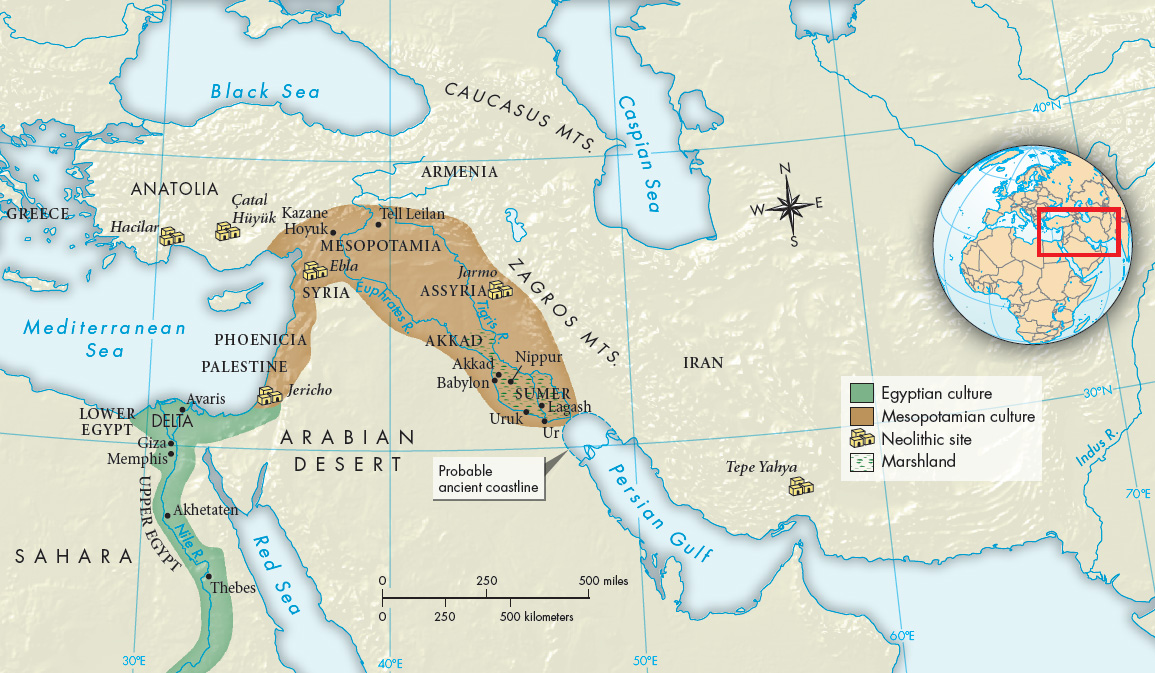A History of Western Society: Printed Page 11
A History of Western Society, Value Edition: Printed Page 10
Civilization in Mesopotamia
What kind of civilization did the Sumerians develop in Mesopotamia?
The origins of Western civilization are generally traced to an area that is today not seen as part of the West: Mesopotamia (mehs-oh-puh-TAY-mee-uh), the Greek name for the land between the Euphrates (yoo-FRAY-teez) and Tigris (TIGH-grihs) Rivers (Map 1.1). The earliest agricultural villages in Mesopotamia were in the northern, hilly parts of the river valleys, where there is abundant rainfall for crops. Farmers had brought techniques of crop raising southward by about 5000 B.C.E., to the southern part of Mesopotamia, called Sumer. In this arid climate farmers developed irrigation on a large scale, which demanded organized group effort, but allowed the population to grow. By about 3800 B.C.E., one of the agricultural villages, Uruk (OO-rook), had expanded significantly, becoming what many historians view as the world’s first city, with a population that eventually numbered more than fifty thousand. People living in Uruk built large temples to honor their chief god and goddess, and also invented the world’s first system of writing, through which they recorded information about their society. Over the next thousand years, other cities also grew in Sumer, trading with one another and adopting writing.
